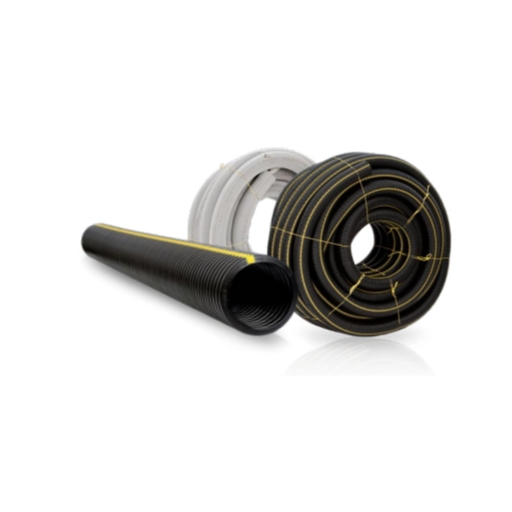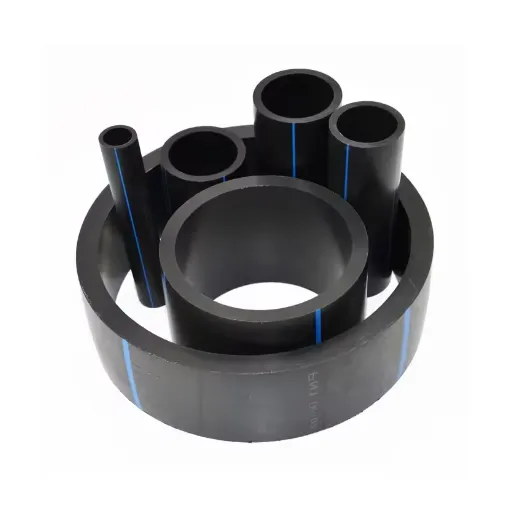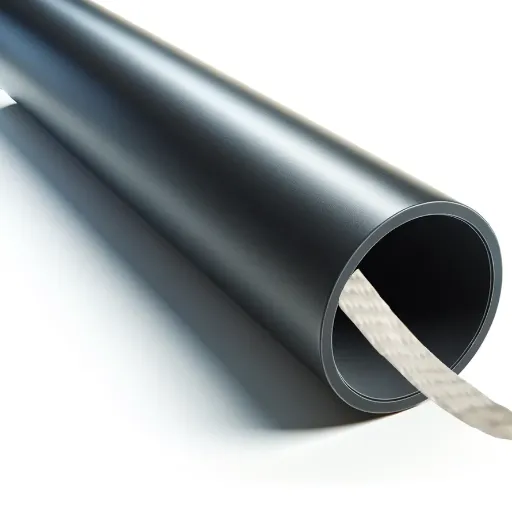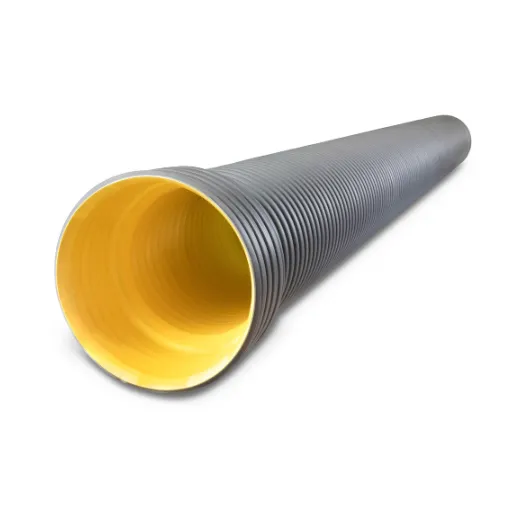When it comes to modern infrastructure and drainage solutions, dual-wall HDPE (high-density polyethylene) pipes have emerged as a distinctly superior option. Known for their durability, high performance, and adaptability, these corrugated pipe systems are transforming the way industries approach stormwater management, agricultural drainage, and infrastructure projects. This article dives into the unparalleled benefits, wide-ranging applications, and essential installation practices associated with dual-wall HDPE pipes. Whether you are an engineer, contractor, or industry professional, this comprehensive guide will equip you with the knowledge needed to understand why this innovative piping solution is becoming the standard in robust water management systems.
Advantages of Dual-Wall HDPE Pipe
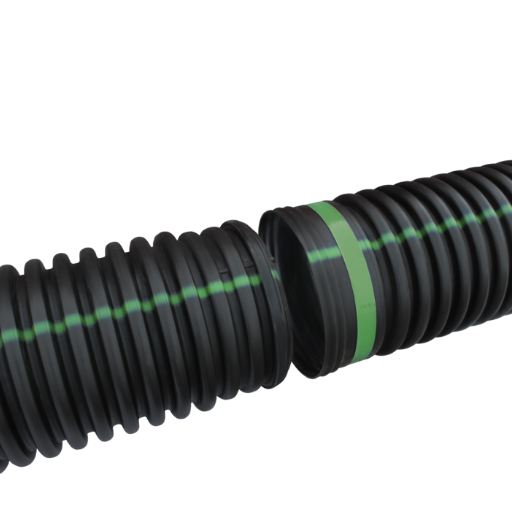
Durability and Longevity
Dual wall HDPE pipes whose qualities encompass strength and long lifespan are typically considered suitable for the gravest water management systems. These pipes are manufactured from high-density polyethylene (HDPE) which offers excellent chemical resistance to corrosion, abrasion, and weathering stresses. Unlike conventional materials like concrete or steel, HDPE stands up well to harsh conditions like continuous exposure to moisture, temperature variations, and aggressiveness posed by soil environments.
The longevity imparted to these pipes by dual wall HDPE is assisted by the structural configuration. The corrugations of the outer wall generate immense strength to resist heavy loads, whereas the smooth inner wall allows for smooth flow of fluids inside. This rare combination of strength and smooth flow enables the pipes to function well for many decades. Industry statistics predict that the design life of this type of pipe exceeds 50 years even installed under the most severe conditions.
Moreover, the flexibility of HDPE is vital for the longevity. It can absorb minor changes in the ground, endure pressure variations, and not crack or fracture, thereby reducing long-term maintenance and repair issues. That places them apart from other pipe materials as the best balance for a low-cost long-service infrastructure with performance assurances, requiring little upkeep through the longest life-cycle.
Resistance to Corrosion and Chemicals
Being corrosion and chemical resistant, these pipes find use for more critical applications. HDPE pipes, unlike traditional metal pipes, do not rust when in contact with water, soil, or atmospheric conditions. This property becomes critical in environments where the pipelines encounter aggressive substances such as acids, bases, or salts, as HDPE papers maintain their structural integrity with time without deterioration.
Due to its excellent chemical resistance, HDPE remains unaffected by most agents because it possesses a non-polar molecular structure. It withstands attacks of ordinarily encountered chemicals like hydrocarbons, industrial solvents, and detergents. Its performance has been well tested and reviewed in various industries, thus meeting severe requirements for chemical resistance in wastewater, mining, and industrial processing.
Further, HDPE pipes’ superior strength helps in reducing maintenance costs and extending service life in corrosive environments. Their non-reactive nature promotes environment safety from contamination, leakages, or failure by chemical reactions. Such properties make HDPE ideal for infrastructure applications needing reliability and performance in highly varying and challenging situations.
Cost-Effectiveness and Installation Efficiency
High-Density Polyethylene (HDPE) is regarded as being more budget-friendly and easier to install, thereby given preference in different industrial and infrastructure applications. Given that it weighs less, it contributes towards a decrease in transportation costs and makes handling during installation easier, hence a reduction in labor and equipment costs. It would be fair to say that compared to conventional materials such as steel and concrete, HDPE has lower installation costs; due to its high strength and durability, it is excellent long-term economic value.
HDPE’s ability to bend contributes to installation efficiency. It may easily be shaped, bent, or fused to accommodate all project needs. Heat fusion welding can be used to create very robust and leak-resistant joints, maintaining system integrity while requiring a reduced number of mechanical connectors and human resources. This increased flexibility speeds up project completion and thus development downtime, even in less favorable circumstances or complicated designs.
Another factor that impacts its value consideration is corrosion. Resistance to corrosion and resistant to abrasion keep the repair costs and replacement costs low. It has a corrosion resistance index and longevity, which can last more than 50 years under certain conditions, tying down the low cost of ownership. These properties, along with low-maintenance needs and installation ease, augment the value of HDPE as cost-effective infrastructure and industrial answer.
Applications of Dual Wall Corrugated Pipe
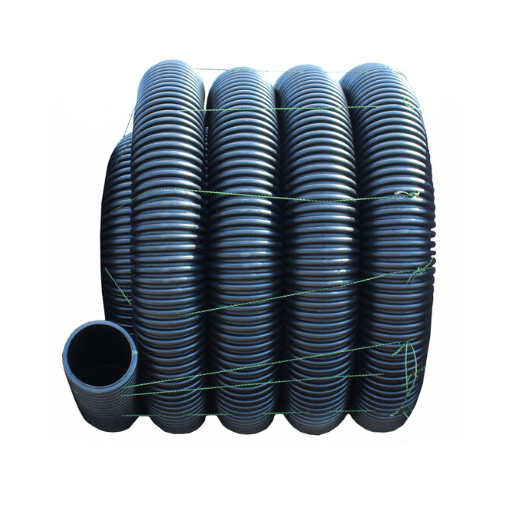
Drainage Systems in Construction
Being very strong and durable with provisions for multi-adaptability, dual wall corrugated pipes are famous in construction. The interior walls of these pipes are smooth, whereas the external walls are corrugated to guarantee optimal free flow of water and high structural strength against heavy loads. The pipes stand up to soil pressures and chemical deterioration, thus earning great consideration in drainage for houses and commercial constructions. Engineers and contractors use these pipes to solve drainage problems in stormwater management, foundation drainage, and subsurface water drainage.
The greatest single advantage that dual wall corrugated pipes offer to the construction world is that they are lightweight and hence easy to handle, transport, and install. On the contrary, they require fewer labor hours compared to conventional materials such as concrete and metallic pipes, which would cause a decrease in installation time and therefore a reduction in the overall cost. Further, their load-bearing character guarantees their reliability in high-traffic scenarios such as roads and bridges, where efficient drainage prevents water accumulation from endangering the infrastructure.
Further developments in manufacture have brought in improvements for performance and flexibility of dual wall corrugated pipes. Changes in material composition and design enhance flexibility by allowing pipes to withstand ground movement and temperature fluctuations over time without losing their functional efficacy. Their anti-clogging property and resistance to sediment buildup make them highly efficient in the long run, thereby reducing the maintenance. This factor stresses the sustainability and cost advantages of dual-wall corrugated pipes as the drainage system of choice in modern-day construction.
Agricultural Applications and Benefits
Due to their structural and functional eficiency, dual-wall corrugated pipes are important components in modern agricultural water management systems. The drainage system helps in field drainage, thus reducing soil and yield inability due to such factors as waterlogging. It is felt that these systems help in increasing infiltration rates and reduce salinity build-up in soil, thus promoting optimum root development.
These pipes fit great in precision irrigation systems, where water distribution efficiency is paramount. The inside smooth surfaces help maintain high flow velocities and the corrugated outside strong enough to sustain the bulk loads of agricultural implements and pressures from subsurface soils. In addition, the long life of these pipes, due to their high resistance to environmental stresses and chemical attacks, further lowers system failure possibilities and operational cost to the famers.
By making use of state-of-the-art manufacturing technology and eco-friendly materials, the pipe will promote water conservation and environment-friendly agricultural practices. Recent industry reports show that agricultural productivity is greatly enhanced by applying these engineered drainage solutions that allow farmers to practice sustainable farming in areas of widely fluctuating rainfall patterns.
Industrial Uses and Specialized Systems
Dual wall corrugated pipes, because of their durability, flexibility, and efficiency, have found importance in many industrial applications. It is worth mentioning that one outstanding application occurs in industrial wastewater management systems, which call upon these pipes to carry out waste fluids in a structurally sound and leak-proof manner. Chemical resistivity and high-pressure resistance guarantee that the pipes give the assurance of reliability for a long time in difficult work environments.
Besides, dual wall corrugated pipes find plenty of applications in stormwater management infrastructures. These systems allow runoff to flow freely while minimizing blockages, thus reducing flood risks in urban areas and helping meet environmental requirements for stormwater runoff. Some more specialized systems such as culverts and underground detention tanks increasingly employ dual wall corrugated pipes to maximize land use capacity and provide the resistance to heavy loads from roads and industrial parks.
Continuous research and technological development have improved the structural engineering of these pipes, and the availability of new materials and manufacturing technologies has improved their thermal resistance, load-bearing capacity, and service life. Case studies from the industry back the claim of these pipes being cost-effective, establishing a reduction of up to 30% in maintenance costs against their opponents in the traditional pipe solutions. This highlights the importance of dual wall corrugated pipes for the growing infrastructure and special engineering systems all over the world.
Installation Process for Dual Wall HDPE Pipe
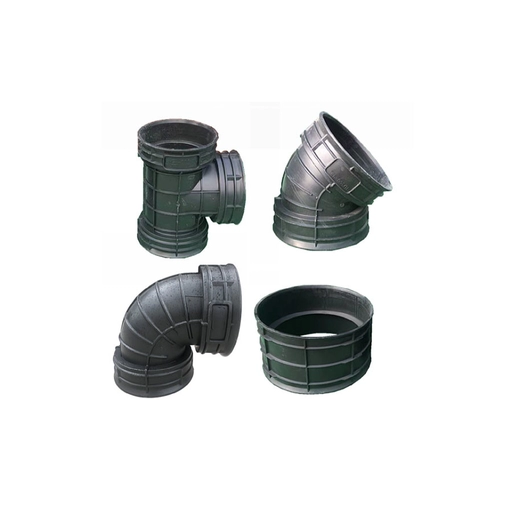
Step-by-Step Installation Guide
- Site Preparation: Before the installation process, a detailed site survey must be performed to assess whether the ground conditions correspond to project specifications. Besides, all obstructions such as debris or vegetation must be cleared, and the site grading must assure controlled water drainage. Verify whether alignment markers and reference points are set correctly vis-à-vis the design layout. The compaction of the soil inside the excavation area shall meet the criteria for minimum density as determined by engineering considerations.
- Trench Excavation: Excavate the trench in actual accordance with depth and width specification in the engineering drawings. The trench bottom should be smooth, stable, and devoid of debris or large rocks. The maximum dimension recommended for the trench width ideally should be the pipe diameter plus that necessary for properly placing the bedding material and laterally moving the pipe during backfilling and compaction. Measures like trench sheeting or dewatering may be required in the case of unstable soil conditions.
- Placing Bedding: Ensure the uniform spreading of the bedding material, which normally consists of granular soil or any other acceptable backfill material, over the bottom of the trench. Thickness of bed will be as per project requirements, and ASTM D2321, so as to provide sufficient support and load distribution to the pipe. The bedding shall be compacted to a density required to remove voids, hence preventing pipe deflection under load.
- Pipe Installation: Install pipe sections in the trench carefully, maintaining the alignment to the designated slope or grade. Assemble joints according to manufacturer’s specifications with sealing for structural and hydraulic integrity. In pipeline construction involving numerous sections, control of joint deflection tolerances is highly important so that joint deflection never becomes a strain during pressure.
- Initial Backfill: Place backfill along the pipe sides and over it in a uniform thickness in layers and compact during placements in layers to avoid any displacement of the pipe or variation in pressure on the pipe. Backfill shall comply with standard requirements pertaining to grain size, angularity, and compressibility as specified in industry standards. Special care should be exercised during the compaction of the haunch zone for effective load transfer and stability.
- Final Backfill and Compaction: Final backfill operation placing and compacting material in successive layers until trench restoration to grade level is completed. Compaction tools and methods for the successive layers shall be vibration rollers or plate compactors, etc., depending on the type of backfill materials and trench conditions. The compaction effort should observe required standards to ensure long-term performance as envisaged for the pipeline system.
- Quality Assurance and Inspection: Test thoroughly for installation activities to ensure complete adherence to design and technical standards. Use gauges, levels, and laser equipment to ascertain that alignment and slope are accurate, as well as compaction. Keep on record inspection findings and, in the event of discrepancies, address them immediately; thus, the reliability of the system should not be affected.
- Post-Installation Testing: Conduct hydrostatic or air pressure and deflection tests to ascertain structural integrity and functionality of the pipeline. The test procedure must strictly follow the technical guidelines and codes currently in use. Keep all test case data documented and reported to form a basis for further maintenance.
By following these stepwise details, an optimum position will be achieved in installation in regard to durability, safety, and compliance with regulatory and engineering standards.
Common Mistakes to Avoid During Installation
- Insufficient Pre-Installation Assessment: Failing to conduct the requisite site and material assessment prior to installation often leads to unforeseen inconveniences. This includes lesser evaluation of soil characteristics, impacts on the environment, or compatibility of pipeline materials for the application in mind. In some cases, such oversights might be detrimental to the structural soundness and durability of the system.
- Incorrect Joint Assembly: Joints are oftentimes misaligned during installation, and are poorly sealed. This would then lead to failure-at-connections, leaks, and increased maintenance expenses. The joints need to be handled with care and aligned properly and used in accordance with the manufacturer’s specification to make sure that the joints retain a good seal and are secure.
- Disregarding Pipe Bedding and Backfill Standards: Use of improper bedding materials or failure to adequately compact backfill will cause the pipes to shift or deform when loaded. Proper grading and compaction standards must be adhered to ensure its stability and functionality throughout the operational life of the pipeline.
- Ignoring Manufacturer Recommendations: This is a very risky approach because it not only may void product warranty, but it is also a cause for premature failure of a system. Refer always to the technical manual regarding torque specifications, assembly requirements, and curing time.
- Thermal Expansion and Contraction Are Underestimated: It often becomes a cause for buckling, stresses, or joint failure over time when thermal expansion and contraction effects on pipelines are ignored. Therefore, the installation should account for the use of expansion joints or carrying out effective spacing, especially in application scenarios where great temperature variations occur.
- Poor Pressure Testing: Poor pressure testing, by omission or inadequacy, puts the entire system at risk. Pressure and leakage testing as laid out in the industry’s best practice and regulatory requirements shall always be followed to certify safety and reliability.
By preempting these usual installation mistakes, the engineers and installers will pay to improve the efficiency and durability of the systems instead of having to face costly repair or replacement bills.
Maintenance of Dual Wall HDPE Pipe Systems
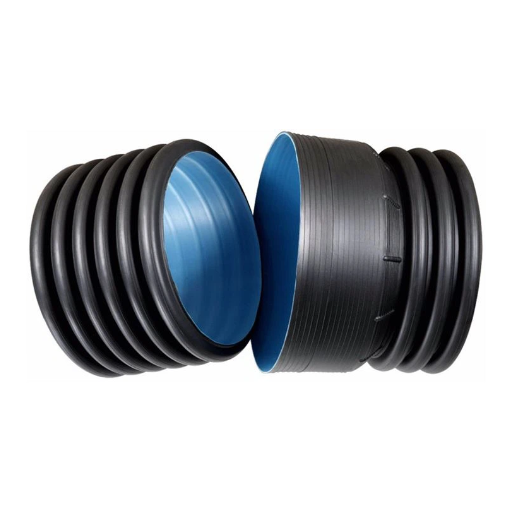
Routine Inspection and Cleaning
Periodical inspection and cleaning are of paramount importance to ensure the further functioning of dual-wall HDPE pipe systems and to improve their lifespan. These inspections must be done at suitable intervals so that potential occurrences can be uncovered: blockages inside, damage to pipe walls, joint disconnections, etc. One must look at all visible parts of the pipe network and in addition apply modern techniques, such as video inspection systems, to get an idea of any issue internally. Early detection would greatly mitigate failure at a systemic level, leading to very costly downtime.
Cleaning must be done regularly to clear away debris, sediment, or any other foreign materials that reduce hydraulic efficiency within the pipes. Jetters are generally preferred over water at high exposure or pressures, whereas mechanical rods are considered much better for systems that require this option. Maintenance of cleaning activities should consider the environmental conditions such as soil types and stormwater exposure. Effective cleaning hence increases operational efficiency while increasing pipe life.
If I can think of the best way forward, it should be in implementing preventive measures for routine maintenance, so operational standards are met, and risks mitigated beforehand. Subsequently, documented inspection and cleaning activities will allow one to track the performance of the system over some time. Following these best practices on a constant basis will form a sturdy maintenance culture that guarantees efficiency, safety, and reliability for the long haul.
Repair Techniques for Damage
When considering damage to pipe systems, choosing the appropriate method for repair depends upon the extent of damage, its location, and the nature of the problem. Light cracks or leaks can be filled using an epoxy-resin-based repair compound. This method provides a durable repair, minimizing downtime and negating the requirement of disassembling much of the system. Clamp repairs would then be the good option to go for every medium-shot puncture. Stainless steel clamps and rubber gaskets could be placed over the damaged area for a quick seal that stands up to pressure.
In the case of more severe compromises to the pipe, such as a large fracture or failure in structural integrity, the damaged section must be replaced. This necessitates cutting off the compromised section and installation of a new section by welding or adhesive-bonded couplings, depending on the materials involved. Other options entail trenchless technologies such as cured-in-place pipe (CIPP) lining, which facilitates repair without the disruption of excavation. This involves inserting a resin-coated liner into the damaged pipeline and then curing it so that it forms a seamless inner lining.
Occurrence of repair must follow standard industry guidelines to ensure compliance and performance. Employing condition-monitoring devices, say, ultrasonic testing or infra-red thermography, helps to pinpoint weaknesses and make the necessary repairs before they become bigger issues. Formulating a full-fledged repair protocol equips one with the convenience of executing repairs, thereby reducing downtime and improving overall life expectancy of the pipe system.
Extending the Lifespan of Your Drainage System
Implementing a set of preventive activities focusing on maintenance, diagnostics, and materials will go a long way in preserving both the durability and efficiency of drainage systems. Hence, non-invasive techniques should be deployed, such as regular inspections by way of CCTV monitoring to afford timely warnings on early stages of wear, clogging, or structural deterioration. On the other hand, installation of HDPE-made or corrosion-resistant materials for drainage equipment goes miles to reduce deterioration stemming from chemical attack or exposure to temperature variations or weather.
Furthermore, intelligent water management systems that work by monitoring flow and flagging anomalies in real-time provide great additional strength. These technologies help gather critical information on where and when a vulnerability is emerging and thus avert even more costly repairs and disruptions. Plan for sufficient running slopes during installation; curing water pooling attenuates long-term stress on the low-pressure system.
Combining bi-annual cleaning regimes that involve hydro-jetting or mechanical rod cleaning methods will, in turn, keep sediment and debris buildup to a minimum level and increase the feasibility period of the system. By institutionalizing such practices, stakeholders will motivate an enduring drainage system yet keeping the life cycle within regulatory and cost frames.
Comparing Dual Wall HDPE Pipe to Other Materials
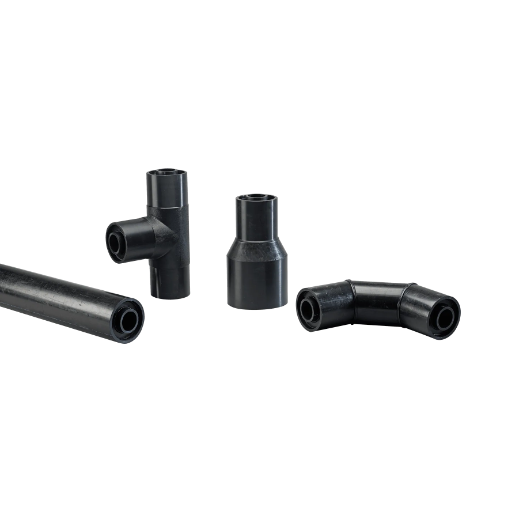
Dual Wall HDPE vs. PVC Pipe
Dual Wall HDPE pipes score higher than PVC pipes in flexibility, durability, and resistance to environmental variables; the opposite holds true for PVC pipes-a stiffer sort of pipe, cost-effective and thus mostly suitable for static pressure applications.
|
Aspect |
HDPE |
PVC |
|---|---|---|
|
Flexibility |
High |
Low |
|
Strength |
Excellent |
Moderate |
|
UV Shield |
Yes |
No |
|
Pressure Cap. |
High working |
High static |
|
Connection |
Heat fusion |
Cement joints |
|
Expense |
Higher upfront |
Lower upfront |
|
Usage |
Versatile |
Limited |
|
Longevity |
100+ years |
Moderate |
|
Bendability |
Small radius |
Large radius |
|
Chem. Resist. |
High (varied) |
High (varied) |
Concrete Pipe vs. Dual Wall HDPE Pipe
Resistant to corrosion and lightweight with flexibility, HDPE pipes are Dual Wall, whereas concrete pipes are rigid, heavyweight, durable, yet prone to cracking whenever there is any soil movement.
| Aspect | HDPE | Concrete |
|---|---|---|
|
Weight |
Light |
Heavy |
|
Flexibility |
High |
Low |
|
Durability |
Excellent |
Moderate |
|
Corrosion Res. |
High |
Low |
|
Installation |
Easy |
Complex |
|
Lifespan |
50+ years |
15-20 years |
|
Flow Rate |
High |
Moderate |
|
Jointing |
Fusion |
Cement-based |
|
Cost |
Higher upfront |
Lower upfront |
|
Safety |
High |
Moderate |
Metal Pipe Alternatives and Their Limitations
Corrosion resistance and decreased maintenance requirements distinguish these alternatives from steel pipes. Still, they carry specific limitations that must be considered in the light of application.
- PVC and CPVC Pipes: Polyvinyl chloride (PVC) and chlorinated PVC (CPVC) types of pipes are considered lightweight, easy to install, and inexpensive. Low maximum pressure ratings are somewhat of a disadvantage when compared to metallic counterparts, and reduced efficiency is observed as the operating temperature increases. CPVC presents a better resistance to heat but cannot be used for high-temperature applications involving steam or thermal processes beyond its specified limits. Furthermore, UV radiation will degrade PVC-based materials used in outdoor installations unless reasonably shielded.
- HDPE Pipes: HDPE (High-density polyethylene) has potent chemical-resistant properties and flexibility, the reasons why underground or trenchless types of installations are best for these pipes. They resist corrosion and cracking in some environments. However, HDPE pipes are less rigid, which can lead to structural problems in above-ground installations, where systems must be precisely aligned. Also, the HDPE burst strength is low in comparison with either steel or ductile iron, thus making it unsuitable for extremely high-pressure systems.
- Composite Pipes: Composite pipes, making use of fibers or additional layers, marry the strengths of the various materials. Fiberglass-reinforced plastic (FRP), for instance, performs very well in corrosive environments but may require costly installation and complex design. The major drawbacks of composites are mechanical impact resistance and their propensity to carry high upfront costs from the manufacturing process.
Testing and field-based evaluations practice is very critical for the selection of any alternative pipe material. The system pressure requirements, chemical exposure, temperature variations, and lifecycle costs must be carefully considered when trying to align the alternative to the operational demand.
References
Frequently Asked Questions (FAQ)
Q: What is a dual-wall HDPE pipe?
A: A dual-wall HDPE pipe is a type of piping solution made from high-density polyethylene that features two distinct walls: an inner smooth wall and an outer corrugated wall. This design provides enhanced strength and flexibility, making it ideal for various applications, including drainage systems and sewage management.
Q: What are the advantages of using dual-wall HDPE pipe?
A: The dual-wall HDPE pipe offers several advantages, including superior corrosion and abrasion resistance, flexibility, and a lightweight design. Its smooth interior reduces friction, allowing for efficient fluid flow, while its corrugated exterior enhances structural integrity and soil-tight performance.
Q: How is dual-wall HDPE pipe installed?
A: Installation of dual-wall HDPE pipe typically involves trenching to create a suitable bed for the pipe. The bell and spigot design allows for easy jointing, and proper fittings are essential to ensure a water-tight connection. Following the manufacturer’s specifications and guidelines is crucial for a successful installation.
Q: What applications are best suited for dual-wall HDPE pipe?
A: Dual-wall HDPE pipe is commonly used in drainage systems, culverts, and landscape applications. Its resistance to chemicals and pollutants also makes it suitable for managing wastewater and other industrial projects, providing a reliable solution for various environmental conditions.
Q: What specifications should be considered when selecting a dual-wall HDPE pipe?
A: When selecting a dual-wall HDPE pipe, specifications such as diameter, wall thickness, and corrugation profile are important. Additionally, compliance with ASTM standards and the intended application, whether for drainage, sewage, or other uses, should be considered to ensure optimal performance.
Q: How does dual-wall HDPE pipe compare to other materials?
A: Dual-wall HDPE pipe offers an excellent alternative to reinforced concrete and corrugated metal pipe due to its lightweight nature, flexibility, and superior corrosion resistance. Unlike metal, it does not corrode or degrade over time, making it a more durable and long-lasting option for many projects.
Q: What is the typical diameter range for dual-wall HDPE pipe?
A: Dual-wall HDPE pipes are available in various diameters, typically ranging from 4″ to larger sizes, depending on the application requirements. The selection of diameter should be based on the specific drainage system design and the fluid capacity needed.
Q: How does the dual wall design enhance performance?
A: The dual wall design of HDPE pipe enhances performance by combining a smooth inner wall that minimizes friction with a corrugated outer wall that provides strength and flexibility. This configuration allows the pipe to withstand soil pressure and environmental stresses while maintaining a high level of flow efficiency.
Q: Can dual-wall HDPE pipe be used for industrial applications?
A: Yes, dual-wall HDPE pipe is suitable for various industrial applications due to its durability, chemical resistance, and ability to manage heavy loads. Its flexible nature and ability to handle different environmental conditions make it a preferred choice in industrial settings.
Q: What are the storage requirements for dual-wall HDPE pipe?
A: When storing dual-wall HDPE pipe, it is important to keep the pipes in a clean, dry area, avoiding exposure to extreme temperatures or direct sunlight. Stacking pipes properly and using supports can prevent deformation and ensure the integrity of the material is maintained until installation.



